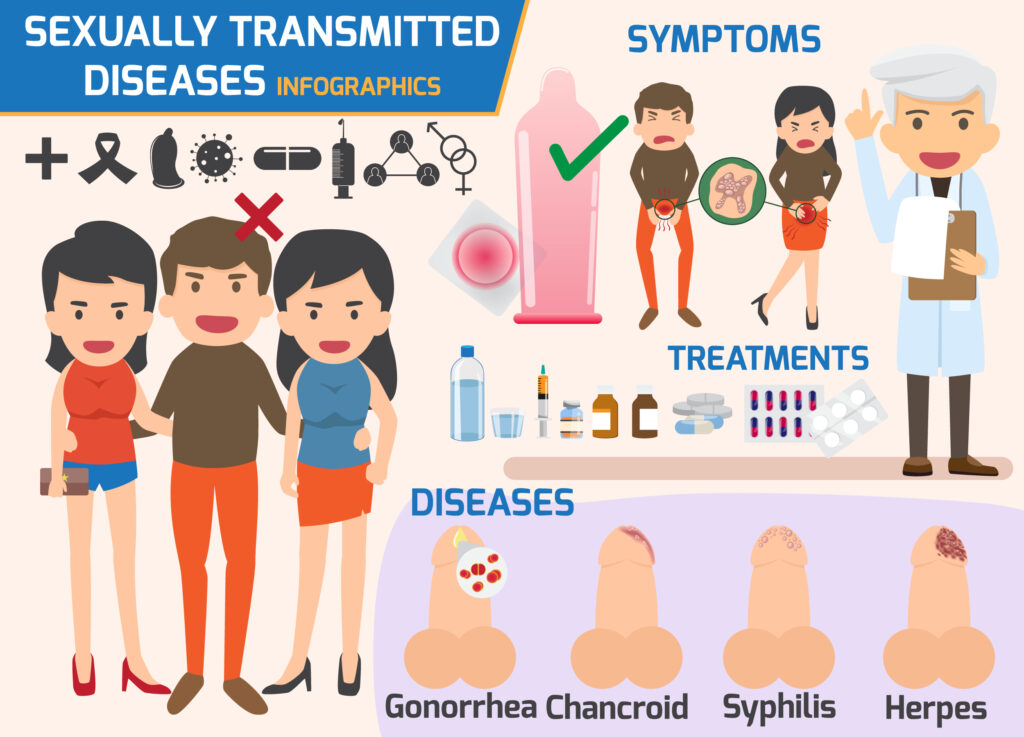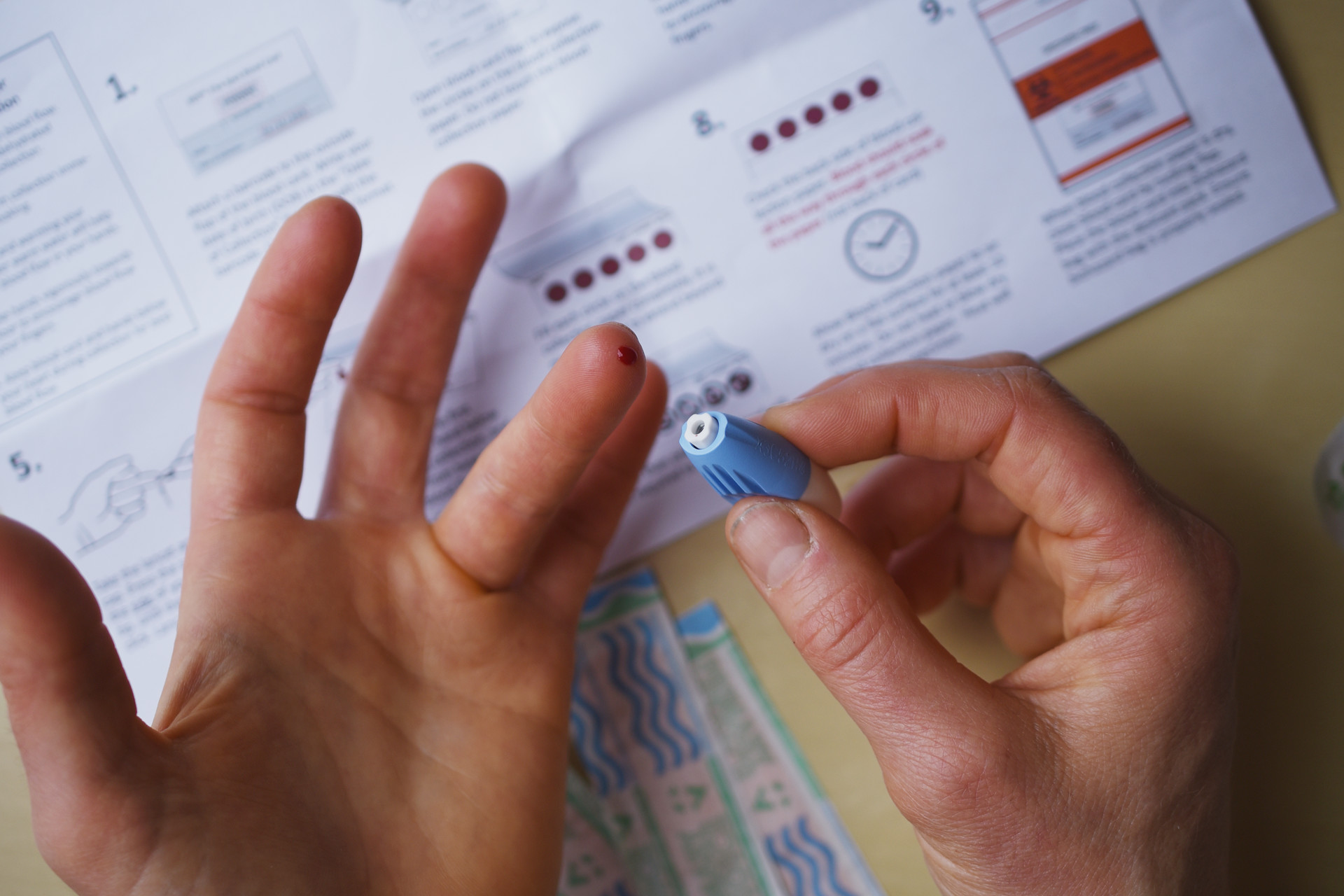Sexually transmitted diseases (STDs), also known as sexually transmitted infections (STIs), are infections primarily spread through sexual contact, including vaginal, anal, and oral intercourse. These infections can be caused by bacteria, viruses, or parasites. Common examples include chlamydia, gonorrhea, syphilis, human papillomavirus (HPV), herpes simplex virus (HSV), and human immunodeficiency virus (HIV). These conditions can vary in severity, but they share the potential to significantly impact individual and public health if left unmanaged.

Symptoms and Health Implications
One of the most challenging aspects of STDs is their often asymptomatic nature. Many individuals infected with STDs may not exhibit noticeable symptoms, unknowingly contributing to the spread of the disease. When symptoms do occur, they may manifest as unusual discharge from the penis or vagina, sores or warts on the genital or anal areas, burning sensations during urination, or discomfort during sexual activity.
If untreated, STDs can lead to severe health complications, including infertility, an increased risk of certain cancers, and heightened susceptibility to additional infections. Conditions like syphilis and HIV, in particular, can have life-threatening implications if not addressed promptly and effectively.
Prevention Strategies
Preventing the spread of STDs requires a proactive and informed approach. Key preventive measures include:
Consistent and Correct Condom Use: Condoms are highly effective in reducing the risk of transmission for many STDs.
Limiting Sexual Partners: Reducing the number of sexual partners can lower exposure risks.
Regular Screenings: Routine testing is especially crucial for sexually active individuals with multiple partners.
Vaccination: Vaccines for specific STDs, such as HPV and hepatitis B, provide vital protection against these infections.
Early detection through regular health check-ups is essential, as many STDs are treatable with medications that alleviate symptoms and prevent complications.
Limitations of Protective Measures
While condoms are a critical tool in STD prevention, it is important to recognize their limitations. Certain STDs, such as HPV and herpes, can spread through skin-to-skin contact and may not be entirely preventable through condom use alone. Therefore, maintaining open communication with sexual partners and undergoing mutual STI testing are equally important steps in safeguarding sexual health.
A Holistic Approach to Sexual Health
Ensuring optimal sexual health involves a combination of education, prevention, and treatment. By understanding the nature of STDs and implementing protective measures, individuals can significantly reduce their risk of infection. Furthermore, fostering an environment of transparency and responsibility among partners is critical to promoting a healthier and more informed society.
Regular consultations with healthcare providers, adherence to preventive practices, and early intervention when necessary can help mitigate the personal and societal burden of STDs. With informed actions, individuals can protect themselves and contribute to broader public health efforts against these infections.
The Importance of Awareness and Education
Raising awareness and promoting education about sexually transmitted diseases are vital steps in reducing their prevalence. Misconceptions and stigma often prevent individuals from seeking the necessary care or having open conversations about their sexual health. Comprehensive sexual education, which includes information about STDs, safe sex practices, and the importance of regular screenings, can empower individuals to make informed decisions about their health.
Public health campaigns play a crucial role in dispelling myths and encouraging responsible behavior. These campaigns should focus on accessibility and inclusivity, ensuring that information reaches diverse populations, including adolescents, marginalized groups, and those with limited access to healthcare services.
Accessible and Confidential Testing
Another critical aspect of STD prevention and management is the availability of accessible and confidential testing services. Many individuals are reluctant to undergo testing due to fear of judgment or privacy concerns. Healthcare providers and organizations must create safe and supportive environments that encourage individuals to take charge of their sexual health.
Advancements in technology have made at-home testing kits more available, providing an additional layer of privacy and convenience. These kits allow individuals to test for common STDs and receive results without the need to visit a clinic. Such innovations can help reach those who may otherwise avoid traditional healthcare settings.
Treatment and Support
For individuals diagnosed with an STD, timely and effective treatment is critical. Many STDs caused by bacteria, such as chlamydia and gonorrhea, can be cured with antibiotics if detected early. Viral STDs like HIV and herpes cannot be cured but can be managed with antiviral medications that reduce symptoms and minimize the risk of transmission.
Support systems are also an essential component of care. Counseling services, support groups, and open communication with partners can help individuals cope with their diagnosis and navigate the emotional challenges that may arise.
Global Efforts and Public Health Policies
On a global scale, organizations such as the World Health Organization (WHO) and Centers for Disease Control and Prevention (CDC) are working to combat the spread of STDs through research, policy development, and awareness campaigns. Governments and healthcare providers must collaborate to ensure that preventive measures, testing, and treatment options are widely available and affordable.
Policy initiatives such as subsidized vaccination programs, mandatory sexual health education in schools, and expanded access to healthcare services are critical to achieving long-term success in reducing STD rates.
The Path Forward
Addressing the challenges of sexually transmitted diseases requires a collective effort from individuals, healthcare providers, policymakers, and communities. By fostering a culture of openness and responsibility, we can work toward a future where STDs are better understood, prevented, and managed.
Empowering individuals through education, improving access to testing and treatment, and supporting ongoing research are all crucial steps in this journey. Together, we can break down the barriers of stigma and misinformation, creating a healthier and more informed society for all.
As sexual health continues to be a cornerstone of overall well-being, proactive measures and collective awareness will remain vital in the fight against sexually transmitted diseases.

